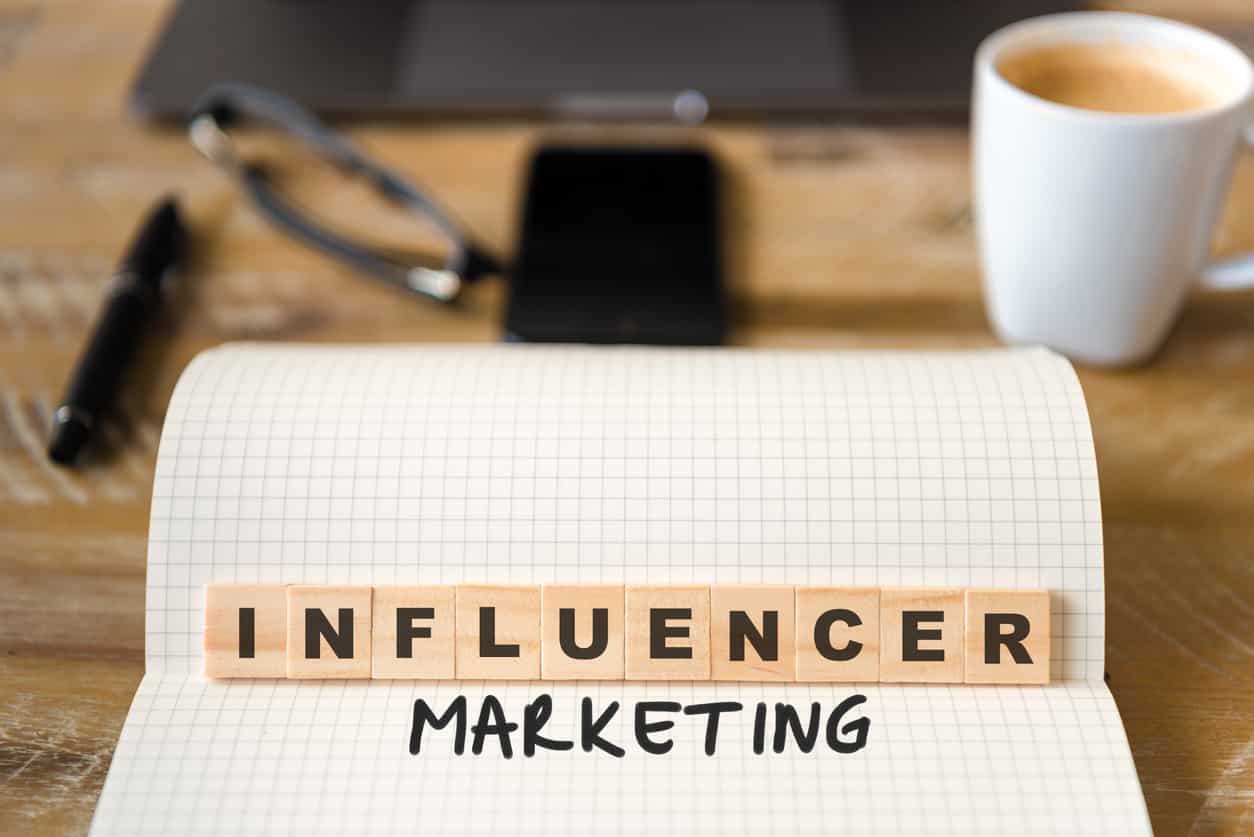“If you want to be interesting, be interested.” – David Ogilvy.
In a world reigned by reducing attention spans, staying relevant becomes a double-edged sword. If you play your marketing cards right, you can stay atop trends and beat the competition that lies ahead. Otherwise, you will witness an inevitable marketing debacle. As amplified internet speed and affordable technology drive the digital era, every individual with a mobile phone can now boost the creator economy.
For the denialists claiming that influencer marketing is a stagnant realm, the statistics reveal a different story. As per reports, influencer marketing reached 16.4 USD due to the increased engagement in short-form content across social media channels.
So, why is customer-centricity important for brands today? What can brands do to analyze the segments of the target market? How can brands leverage the voice of the influencer ecosystem to accelerate their digital footprints? Let’s find out!
The KYC of Influencer Marketing
Influencer marketing has evolved through the waves of digital democratization. What was once a celebrity endorsement is now a paid partnership. The creator economy has surged exponentially since livelihoods were affected owing to the pandemic. Hence, brands need to grow organically while creatively deciphering their target audience.
Understanding that authentic content and engaging target niche drives successful marketing strategies is vital. How does that happen?
Customer centricity results from carefully researching your consumer base that resonates with products and/or services. Merely getting a renowned influencer on board will not shift any marketing gears. Thorough market research and analyzing consumer metrics on social media channels help brands assess the quality of various affiliate and influencer marketing strategies. For example, while Instagram Stories are interactive with UGC, TikTok is the embryo for the biggest trends.
Understanding the brand’s core objectives and the target demographic aids in narrowing down the creators with which brands can work. If an influencer’s content aligns with your brand voice and the audience you want to target, it will echo a successful campaign.
| Did You Know? Santa Claus and Roman gladiators have more in common than just their headgear. They have both been a part of successful influencer marketing campaigns. Don’t believe the hype that influencer marketing only started with the advent of social media.It’s been around since the days of togas and chariots. Millennia before the selfie generation, influencers were already changing the game. The first influencer marketing campaign dates back to 105 BCE with the billboards of ancient Roman gladiator games! |
How to Find the Right Influencer?
Building a niche does not happen overnight. That’s the psyche with which most influencers work. Trust is an essential social prerequisite between brands, customers, and influencers to execute a successful campaign. Almost 63% of people between the ages of 18-34 trust influencers’ paid promotion of brands more than the brands’ promotional posts. A proactive sync between the brand, creator, and target audience creates leads that help an organization tap the market.
How can you achieve the trust trinity?
– By creating an ideal influencer and buyer persona based on the products/services your brand intends to sell. While understanding your customers’ age, tastes, and preferences is essential, you must also find the right influencers whose voice resonates with your audience.
While shortlisting creators to market your products, you should remain mindful of the following:
- Scour the work of influencers across social media channels
Scrutinize the quality, script, and overall storytelling in their posts. This will help your brand be cognizant of the social narrative of the influencers. Seek answers to questions like – is the content sparking conversation? Do the user comments add value to the posts being shared? How much time does the creator take to respond to the comments? This will ensure that the shortlisted influencers uphold the brand’s core values to bond with their followers. The best filter an influencer can wear is that of authenticity.
- Carefully check creators’ followers
Deep diving into the influencer’s following list will give your brand an idea about the dormant followers or spam accounts and the accounts the influencer follows. The trick is simple – if the creator has bought fake followers, there’s a clear upsurge in the number of followers, which is followed by flat growth periods. Most creators have a consistent growth rate if they have a genuine audience. If the creator is tapping into topical events to create content, it will indicate that the influencer is keeping up with the market trends and competition.
- Segment influencers based on your industry
Informed influencer engagement should drive your decision to onboard creators. For example, an interior decor company would want to work with designers, artists, architects, or DIY creators. In contrast, a gaming company would like to associate with video gamers or VR creators. This will push the envelope of creating content that feels authentic and genuine. Do not forget that you’d want to engage with influencers whose audience can transform into a significant lead.
Unleash the Power of Informed AI
In the era of automation, you can save time and energy by letting AI do your job. Have ideas but can’t write a script to create content? Generative AI has got your back!
ChatGPT, Open AI’s popular chatbot advanced features, can help brands draft content for their influencer marketing strategies, making it an interesting tool for brainstorming and thought starters.
With the use of AI, brands can automate tracking of their influencer marketing strategies, which will help them gauge the impact of their content and optimize their campaigns in real time.
However, the question remains, would generative AIGC, aka AI Generated Content drive authenticity? Would AI algorithms be able to differentiate between the existing biases in the influencer marketing industry? Will the increased use of AI in influencer marketing strategy lead to an army of social bots?
Time will tell.
Maybe somewhere in the future, AI will make robots see us the same way we see dogs.
Use the Best Influencer Marketing Strategies
Influencer marketing has become one of the most effective ways to reach a target audience. With the rise of social media platforms like Instagram, YouTube, and TikTok, influencers have gained significant influence over their followers, and brands are now leveraging this influence to promote their products and services. Real-time influencer strategies are an extension of this approach, which involves leveraging influencers’ popularity to create real-time engagement with their followers.
Here are some real-time influencer strategies that brands can use:
Live Streaming: Live streaming is one of the most popular real-time influencer strategies. It allows brands to connect with their target audience in real-time, providing them with an opportunity to engage with the influencers and the brand.
Sponsored Posts: Sponsored posts are a popular real-time influencer strategy that involves paying influencers to promote products or services on their social media accounts. These posts can be targeted toward a specific audience and can help increase brand awareness and sales.
Influencer Takeovers: Influencer takeovers involve giving influencers control of a brand’s social media accounts for a limited time. This strategy can help increase engagement with followers and provide a unique perspective on the brand.
Contests and Giveaways: Contests and giveaways are a popular real-time influencer strategy that involves providing followers with an opportunity to win prizes by engaging with the brand and the influencer. This strategy can help increase engagement and brand awareness.
Event Promotions: Influencers can be used to promote events in real-time. This strategy can help increase attendance and engagement at events.
Consider These Crucial Influencer Marketing Tactics
Defining your Goals: Before launching any influencer campaign, it’s essential to define your goals. What do you hope to achieve? Increased sales? Brand awareness? Engagement?
Identifying the Right Influencers: Finding the right influencers is crucial. It’s essential to consider factors such as the influencer’s niche, audience demographics, engagement rate, and reputation.
Creating Engaging Content: Influencer campaigns should focus on creating engaging and authentic content that resonates with the target audience.
Measuring Success: It’s essential to track and measure the success of your influencer campaigns. This can help you identify what works and what doesn’t, allowing you to refine your strategy over time.
Building Long-term Relationships: Building long-term relationships with influencers can help ensure that your brand remains top-of-mind with its followers. This can lead to increased engagement and sales over time.
Stop Clickbaiting, Start Storytelling
As Instagram, TikTok, YouTube, Facebook, Linked In, and other platforms provide tools and marketplaces for influencers to scale their growth, brands might be propelled to use clickbait to reach quick short-term results.
If clickbait does what all marketers want i.e., to entice the users to view the content, why is it considered detrimental? As discussed, customer centricity is rooted in the fact that users form the nucleus of major digital marketing strategies. This means content consumers are well-informed about the changes in the digital ecosystem. Clickbait content often provides a solution without analyzing the problem statement at hand. Meanwhile, a holistic approach to storytelling with a creator ecosystem will drive campaigns and generate high-intent leads. In the end, building trust with the target segment reduces curiosity gaps even when social media algorithms continually push you to save, skip or scroll.
Please add some of the real-time influencer strategies and also mention some of the important strategies in the pointers
With the Advanced Digital Marketing and Growth Hacking Program from Wharton Online, you can learn beneficial strategies to segment your target audience, analyze buyer persona, and conduct market research. Curated by the Wharton School of the University of Pennsylvania faculty, the program helps you create disruptive digital marketing strategies.








